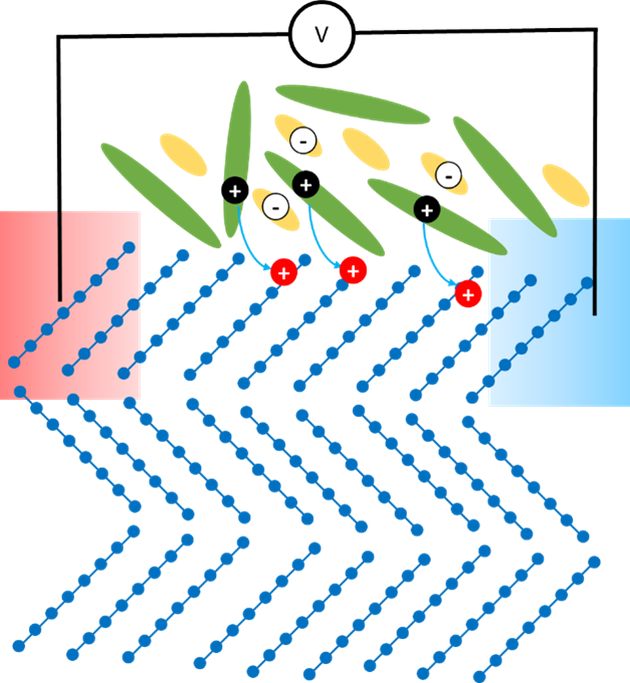Reviewed by Alex SmithApr 5 2022
At the TU Dresden, scientists have initiated a new path towards excellent organic thermoelectric devices. This new path involves the highly efficient modulation doping of highly ordered organic semiconductors under high doping concentrations.
 Schematic illustration of the modulation doping process and thermal voltage generation. Image Credit: TU Dresden
Schematic illustration of the modulation doping process and thermal voltage generation. Image Credit: TU Dresden
The study outcomes have been reported in the renowned Science Advances journal.
Is it even possible for anybody to think about charging the mobile phone by just using their body heat? It might still sound rather innovative. However, thermoelectrics can do this. Thermoelectrics is all about converting heat into useful energy, which primarily makes use of inorganic materials.
Due to their mechanical flexibility, light-weight and low thermal conductivity, organic semiconductors have become a hopeful material system, particularly for flexible thermoelectric applications.
Effective doping for charge-carrier creation is the key to thermoelectric device performance. Normally, conventional bulk doping initiates disorder at high doping concentration thereby restricting the electrical conductivity.
In our study, we employed the modulation-doping approach to highly ordered organic thin films, where the dopant impurity is separated from the conduction channel. With this method, we are able to achieve highly efficient doping even at high doping densities without influencing the charge transport in the thin films.
Dr. Shu-Jen Wang, Study First Author, Institute of Applied Physics, Dresden University of Technology
The research group around Professor Karl Leo examined the charge and thermoelectric transport in modulation-doped large-area rubrene thin-film crystals consisting of various crystal phases.
They were able to display that modulation doping enables obtaining excellent doping efficiencies even for high doping densities when traditional bulk doping flows into the reserve regime. Modulation-doped orthorhombic rubrene obtains highly enhanced thermoelectric power factors.
Our results show that modulation doping together with high-mobility crystalline organic semiconductor films is a novel strategy for achieving high-performance organic thermoelectrics.
Shu-Jen Wang, Study First Author, Institute of Applied Physics, Dresden University of Technology
Wang added, “The main advantage of the modulation doping technique is the avoidance of ionized impurity scattering in the highly ordered undoped narrow bandgap semiconductor allowing both carrier concentration and mobility to be independently maximized.”
Professor Karl Leo states, “Our work paves new ways to achieve flexible thermoelectric devices which allow to directly generate electrical power from heat in an elegant way and efficient way. We believe our work will stimulate further work on high-performance organic thermoelectrics using the modulation doping approach with high mobility organic semiconductors.”
Journal Reference:
Wang, S-J., et al. (2022) Highly efficient modulation doping: A path toward superior organic thermoelectric devices. Science Advances. doi.org/10.1126/sciadv.abl9264.